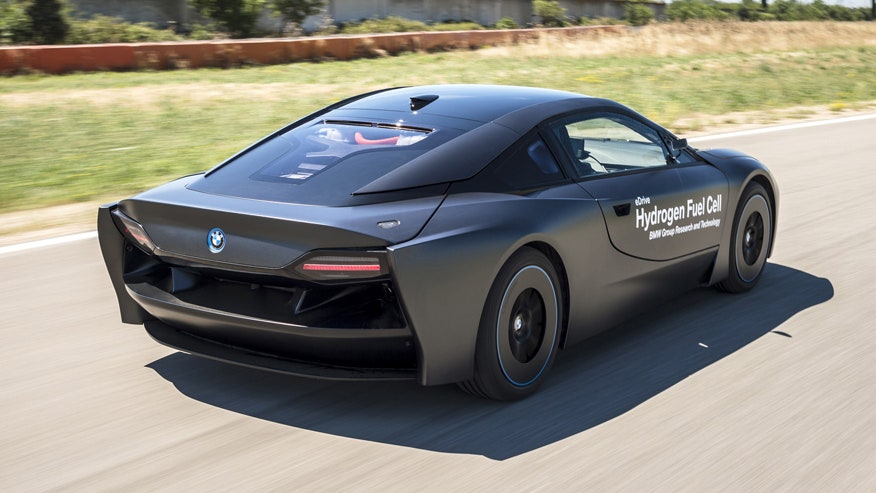In late 2011, BMW signed a memorandum of understanding with Toyota for collaboration on a number of projects, one of which was development of a new sports car platform to spawn a replacement for the Z4 as well as a spiritual successor to the Supra. Another crucial area for collaboration was hydrogen fuel cell technology, with BMW able to leverage Toyota’s years of research in the field.
Despite the lack of a refueling infrastructure and the dubious means by which the majority of commercially available hydrogen is sourced (typically from natural gas that’s undergone steam-methane reforming, a complex process that wastes a lot of energy and produces a lot of CO2), a number of automakers, mostly from Japan, are working to get mass-produced hydrogen-powered fuel cell cars on the roads. In fact, Toyota has just launched its Mirai on the market and next year Honda will bring a production version of its FCV concept.
MORE: BMW To Return To Le Mans With Radical Hydrogen Fuel Cell Racer?
BMW is keen to keep its options open and thus is also looking to develop its own commercially viable fuel cell. This week, the automaker gave a glimpse of its progress with technology demonstrators based on the i8 plug-in hybrid sports car and 5-Series Gran Turismo. The vehicles are being used for testing and validation purposes and are not intended for production. Instead, BMW says its aim is simply to have a production-ready fuel cell by 2020 and may produce a fuel cell car should the market demand one.
Fuel cell cars are essentially extended-range electric cars that use a fuel cell to charge the onboard battery instead of an internal combustion engine. Hydrogen fuel is combined with oxygen from the air inside the fuel cell stack in a process known as electrolysis. The only byproducts are electricity, which is used to directly power an electric motor or charge up a battery, and water.
BMW is keeping most of the specs a secret, but we know that in the 5-Series GT, the car’s regular internal combustion setup has been removed and replaced with a 242-horsepower electric motor, a roughly one-kilowatt-hour battery and a fuel cell stack. To store hydrogen, a pressurized tank in the form of a tunnel tank between the front and rear axles has been installed. BMW says the tank can store enough hydrogen for a driving range of about 300 miles. A similar setup is thought to feature in the i8. The unique body has been installed to reduce weight was also improve aerodynamic efficiency.
MORE: 2015 BMW i8 First Drive
Crucially, both technology demonstrators feature their electric motor at the rear, where they drive the rear wheels only.
BMW’s research into fuel cell technology is just part of the activities at its i sub-brand for eco-focused mobility. Alongside fuel cells, the i sub-brand is also developing and producing plug-in hybrid and fully electric cars, and there are more to come such as the oft-rumored i5.



